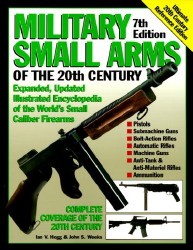 |
The Degtyarev "DP" Light Machinegun |  |
|
|
|
|
CRUFFLER.COM
presents
HISTORIC
FIREARM OF THE MONTH,
March 2001:
 |
The Degtyarev "DP" Light Machinegun |  |

Mondragon Rifle Image Credit: Gotz, Hans Dieter, German Military Rifles and Machine Pistols, Schiffler Publishing Company (West Chester, Pennsylvania, 1990 Page 175 |
SPECIFICATIONS
Type: Light Machinegun System of Operation: Gas Caliber: 7.62x54mmR Capacity: 49 or 47 round pan Sights front: Blade Sights, rear: U-notch Length: 49.84" Weight (loaded): 18.48 lbs Barrel: 21", 4 grooves, right hand twist |
In the early 1890's, in a town in Mexico called Tacubaya, an artillery officer named Manuel Mondragon undertook what was then one of the most difficult technical challenges in the world of firearms design - that of creating a serviceable, portable, and reliable self loading infantry rifle. Not that he had much with which to start. Mexico was a poor country, torn by civil strife and social antagonisms. It was an agrarian state without industrial production capacity and without a strong technical knowledge base upon which to call. It had, since 1876 been
| ruled
by the dictator Porfirio Diaz. Diaz, in a bid for prestige, fame,
and security, promoted Mondragon's efforts. If his could be the first
army in the world to be armed with self loading rifles, he would have fame,
and more importantly, security from his enemies, both foreign and domestic.
As a result, Mondragon, who was more of a tinkerer than a designer, and
his plans for a self loading rifle were catapulted onto national and international
stages at a time when professional weapons designers in Germany, England,
France, Italy and the United States were still putting the finishing touches
on bolt action repeaters.
In 1893 Mondragon unveiled his first gas operated repeating rifle, in 6.5mm caliber. As Mexico had no indigenous facilities to produce |
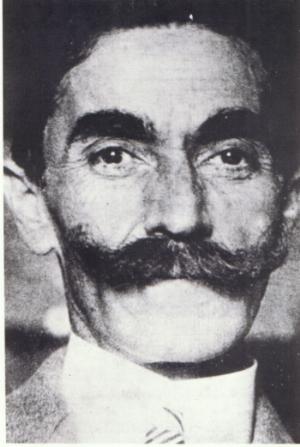
General Manuel Mondragon Image Credit: Gotz, Hans Dieter, German Military Rifles and Machine Pistols, Schiffler Publishing Company (West Chester, Pennsylvania, 1990 Page 176 |
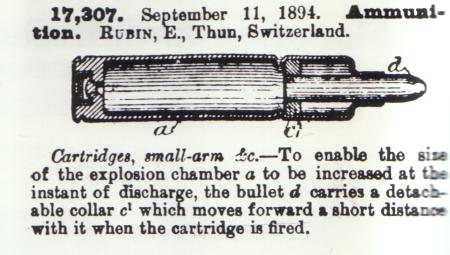
Mondragon 5.2x68mm Cartridge Image Credit: Gotz, Hans Dieter, German Military Rifles and Machine Pistols, Schiffler Publishing Company (West Chester, Pennsylvania, 1990 Page 176 |
with him to devise a cartridge for the rifle. The resultant round, the 5.2x68mm Rubin, may well have been too much for the Mondragon. Indeed, it was almost too much for itself! To handle the extreme pressures generated when it was fired, the 5.2x68mm's bullet was surrounded by a detachable collar that moved forward within the case as the powder gases expanded so as to increase the size of the |
In the next model of the rifle, Mondragon turned to more conventional ammunition types. Trials were made with rifles chambered for the .30-30 Winchester, the 7.5mm Swiss, and the 7x57mm Mauser. A version in 7x57mm was submitted for British trials in 1903. In the first trial, the rifle suffered an internal parts breakage and was withdrawn. In the second, the rifle was successfully fired, but complaints were received that it would only function when freshly cleaned, and that its mechanism was too complicated. Further improvements were made, and the Mexican Army accepted the rifle chambered for the 7x57mm Mauser as the Model 1908. A contract for 4,000 was let to SIG in 1908, with a unit cost of 160 Swiss Francs - four times as much as a comparable Mauser bolt action rifle.
All was not well, however, and when the first 400 Mondragons arrived in Mexico in 1911, new problems surfaced. As noted by SIG, the rifle's proper function was entirely dependent on the quality of the ammunition. From an official SIG document:
It transpired that the functioning of the self-charging rifle is so dependent on the quality of the ammunition, which plays a similar role in the self- charging weapon to that of the fuel in a combustion engine. Even when this knowledge was acted on, the weapon was still sensitive, as it fired a long and powerful cartridge and its dimensions were limited.As a result, the Mexicans canceled the order, and SIG halted production, left in dire financial straits by the uncompensated expenses of manufacture. The remaining rifles, approximately 3,000 in number were purchased by World War One belligerents, the majority of them going to the artillery depot in Spandau, Germany.
As the Mexicans had before them, the Germans attempted to make of the Mondragon a useful tool of war. It was issued, in 7x57mm Mauser, as a weapon for aircraft observers, and as such was equipped with a special thirty round drum magazine. Two Mondragons were issued per aircraft, as frequent stoppages were expected.
The Flieger-Selbstlader-Karabiner 15 (Self Loading Aircraft Carbine, Model of 1915), as the Mondragon was known in German service, yielded no better results for the Germans than it had for the Mexicans or the Swiss. The manual issued by the Prussian War Ministry in February, 1917 read:
The Fl.-S.-K. 15 is . . .only a war-use-capable necessity-help weapon. It can only be used to advantage when the weapon can be carefully examined and maintained by technically trained hands before and after being used.Fortunately for German observers, their aircraft were soon re-equipped with flexibly mounted Parabellum, Dreyse, and Maxim machineguns.
OPERATION
| The Mondragon used gas, tapped from the barrel, to drive an operating piston to the rear and open the bolt. Locking was achieved by means of seven lugs on the bolt. The bolt was rotated by means of projections on the bolt operating handle engaging in cam tracks cut in the bolt, not unlike the system |
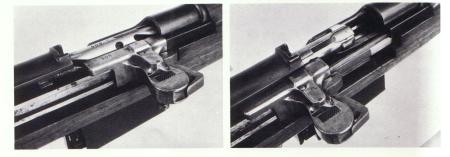
Mondragon Action Image Credit: Gotz, Hans Dieter, German Military Rifles and Machine Pistols, Schiffler Publishing Company (West Chester, Pennsylvania, 1990 Page 178 |
The firing process was somewhat convoluted, but worth exploring in detail. Some 165mm behind the muzzle, a 1mm diameter gas vent is drilled in the barrel. When the Mondragon's floating firing pin is struck by the hammer, a portion of the propellant gases stream through this hole and into the gas cylinder, which is located below the barrel. The gas forces the gas piston (located inside the gas
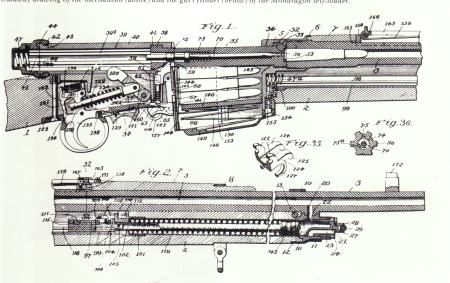
Mondragon Cutaway Image Credit: Gotz, Hans Dieter, German Military Rifles and Machine Pistols, Schiffler Publishing Company (West Chester, Pennsylvania, 1990 Page 179 |
cylinder) to the rear, and in doing so, compresses the recoil spring. The rear of the piston ends in a perpendicular projection that engages the bolt handle, or "coupling piece." The bolt handle has lugs that engage helical grooves on the bolt, and as it is forced to the rear, force the to bolt to rotate its lugs out of engagement with the receiver locking recesses. The bolt and cocking handle continue rearward, extracting and ejecting the fired case, and cocking the |
There is a safety lever located between the triggerguard and the magazine. the magazine is a fixed box with a removable floorplate and follower, much like Mauser rifles, that is fed from above with stripper clips. When used with the thirty round drum magazine, the floorplate and follower are removed, and the drum magazine's feedway inserted through the magazine box.
The Mondragon was, above all else, complex. The bolt was locked by seven lugs, three on the front that locked into recesses in the receiver, and four at the rear that fit under the closed, tube shaped rear section of the receiver. Mondragon's evident goal was to achieve a perfect gas seal within the operating system, and to this end he equipped the gas piston with three copper rings (not unlike the piston rings on an internal combustion engine). Additionally, the hollow gas piston was to be lubricated regularly by filling it with small arms grease.
The Mondragon also suffered from poor accuracy. As noted in the Prussian manual:
The unified construction of this self-loading weapon results in greater variations in the targeting position than exist in previously introduced weapons. Only deviations of more than 20cm from the normal group are corrected.CONCLUSION
BIBLIOGRAPHY
Gotz, Hans Dieter, German Military Rifles and Machine Pistols, (Schiffer Publishing, Ltd., West Chester, Pennsylvania: 1990)
Hogg, Ian V.,
and John S. Weeks, Military Small Arms of the 20th Century 7th Edition,
(Krause Publications, Iola, Wisconsin: 2000)
German Military
Rifles and Machine Pistols is available from IDSA Books. Click
on the image to order:
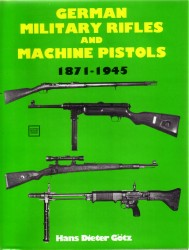
Military
Small Arms of the 20th Century is available from Amazon.com.
Click on the image to order:
